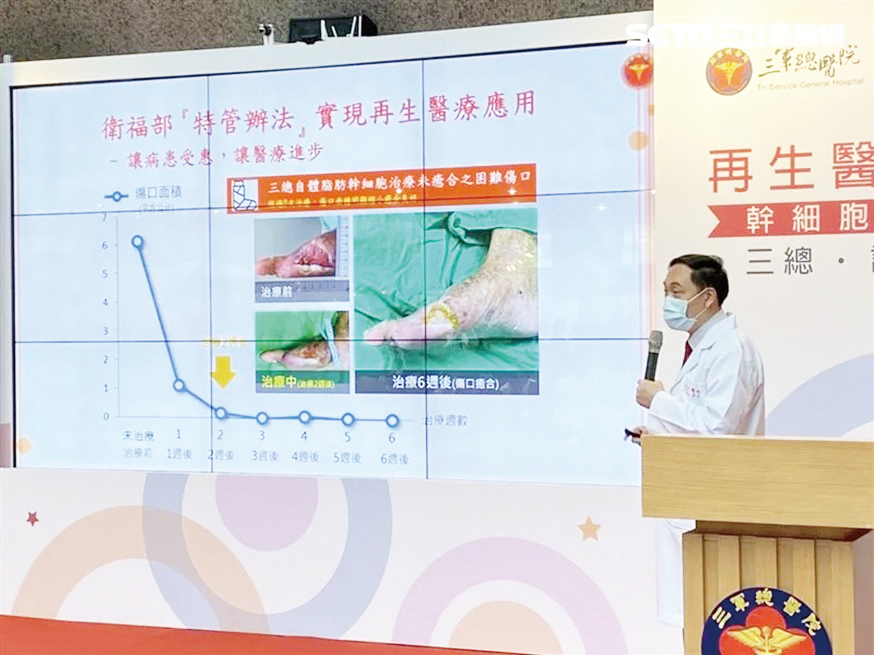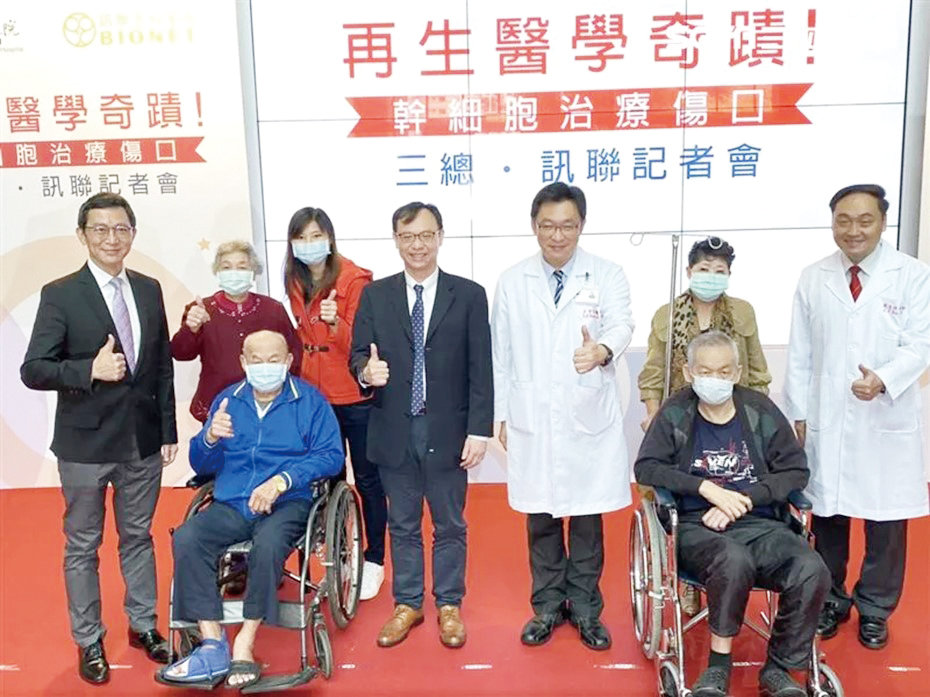A New Dawn for Chronic Wounds: The Current Status of Cellular Therapy Applications in Taiwan -Cell Therapy Center
Update Date:2024/12/04,
Views:152
According to Taiwan's National Health Insurance statistics, approximately 510,000 people seek medical attention for chronic and hard-to-heal wounds annually. The number of patients with chronic wounds is estimated to grow by 6% to 9% each year. The causes of these chronic wounds include diabetic foot ulcers, pressure sores, venous ulcers, and peripheral artery occlusive disease, which are also significant contributors to the increasing demand for long-term care due to the nation's aging population.
Chronic wounds refer to wounds that fail to heal properly despite six weeks or more of standard medical treatment. These wounds consume substantial healthcare resources and are often challenging to manage effectively. Therefore, the application and development of regenerative cell therapy for treating chronic wounds are both necessary and urgent.
Adipose-derived stem cells (ADSCs), found within adipose tissue, are a type of mesenchymal stem cell characterized by their abilities for self-renewal and multidirectional differentiation. This versatile differentiation capability allows ADSCs to transform into various cell types, such as adipocytes, chondrocytes, myocytes, osteoblasts, and neurons.
Stem cells possess the dual ability to self-renew and differentiate into multiple lineages. They can secrete cytokines and differentiate into mature cells to repair and replace damaged or aging cells. For example, ADSCs can differentiate into chondrocytes, aiding in the activation and repair of damaged or aging cartilage cells. Additionally, they can secrete growth factors that nourish and activate other cells, stimulating cellular activity and functionality. This process can rejuvenate underperforming cells, enabling them to regain their original functions.
The advantages of using adipose-derived stem cells (ADSCs) include their ease of collection through minimally invasive procedures like subcutaneous liposuction or direct fat extraction surgery. Compared to harvesting bone marrow stem cells, the process is significantly less painful. Additionally, since ADSCs are derived and cultured from the individual’s own excess fat, they are generally more acceptable to the public and avoid the ethical concerns associated with stem cell sourcing.
Adipose-derived stem cells (ADSCs), with their abilities for self-renewal and multidirectional differentiation, can secrete cytokines and differentiate from their original mesodermal lineage into ectodermal skin tissue cells. This unique capability offers an innovative therapeutic option for hard-to-heal wounds, extensive burns, and skin trauma or damage.
In alignment with the national regenerative medicine policy and to integrate with the global biotechnology and medical technology industries, our hospital has partnered with Syncell Biotechnology Co. to actively advance expertise in cell therapy. In 2020, we received approval under Taiwan’s first Special Regulations for applying autologous adipose-derived mesenchymal stem cells for the treatment of chronic and hard-to-heal wounds that had not healed for over six weeks.
This groundbreaking therapy achieved remarkable success. For instance, Mr. Luo, in his 80s, and Mr. Wang, in his 60s, experienced transformative healing using their own adipose-derived stem cells. Previously unhealed and necrotic wounds gradually contracted and regenerated skin, showcasing the extraordinary potential of regenerative medicine. Both patients and their families were overjoyed with the results.
According to statistics released by Taiwan's Ministry of Health and Welfare as of December 31, 2022, under the Special Regulations for cell therapy, approximately 10 evaluable patients received autologous adipose-derived stem cell treatment for chronic or hard-to-heal wounds persisting for over six weeks.
The patients had an average age of 71.2 years (range: 39.5 to 87.6 years) and were followed for an average of 247 days (range: 13 to 440 days). Before treatment, the average wound size was approximately 16.96 cm². With a combination of debridement surgeries and local dressing treatments, the wound area reduced by an average of 12.6 cm². 【5】
Adipose-derived stem cells accelerate wound healing through several mechanisms. They differentiate to repair damaged cells in the wound bed, secrete growth factors to activate residual normal tissue cells near the wound, and promote angiogenesis. Additionally, they regulate immune function and possess anti-inflammatory properties, collectively enhancing the wound-healing process.
Sources:
1. Ministry of Health and Welfare Cell Therapy Section >> Expert Opinions Link
2. Sanli News Network
3. Tri-Service General Hospital e-Newsletter, Issue 200 [Activity Update]
4. Tri-Service General Hospital e-Newsletter, Issue 205 [Activity Update]
5. Ministry of Health and Welfare, Analysis of Results for Specific Cell Therapy Technology Effectiveness

